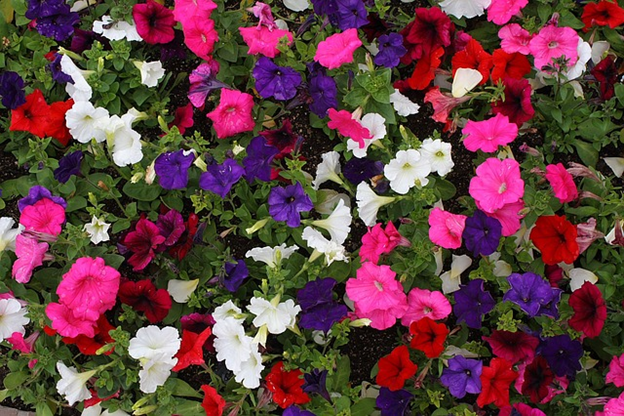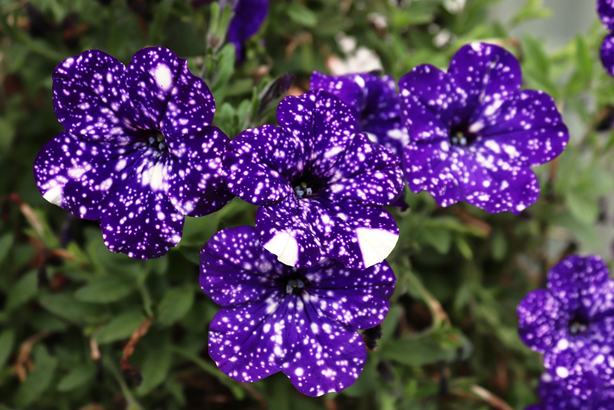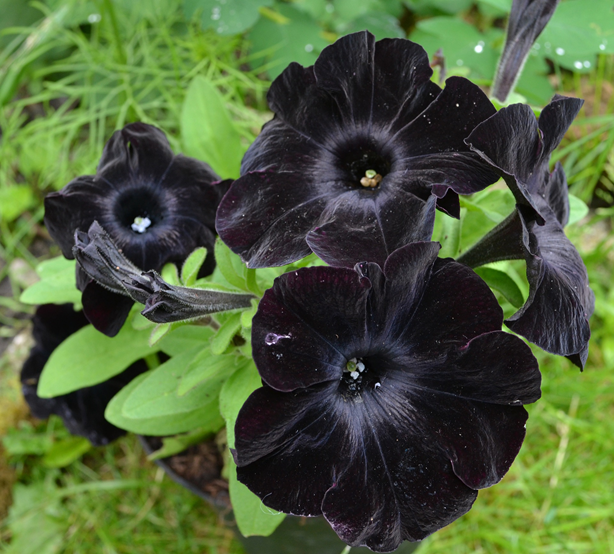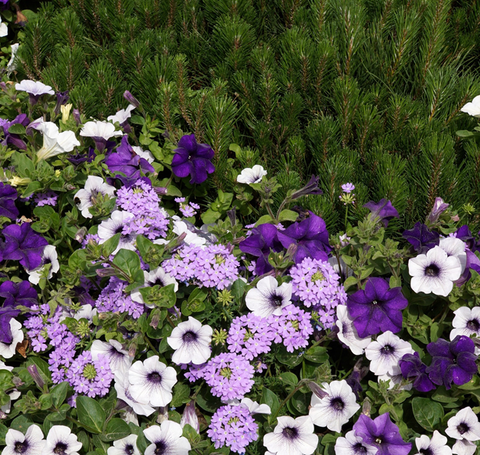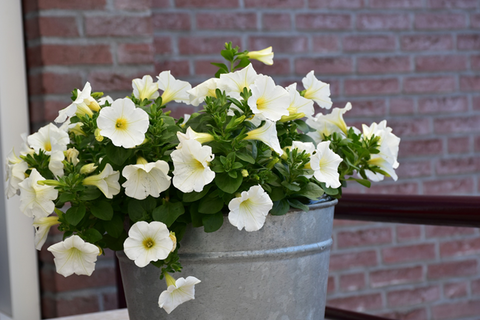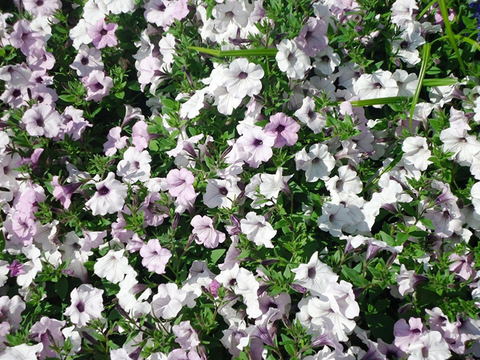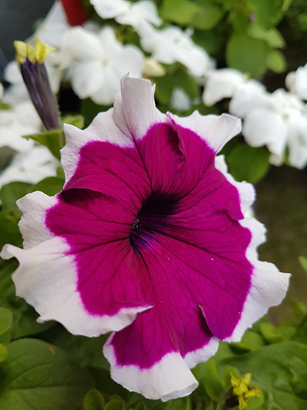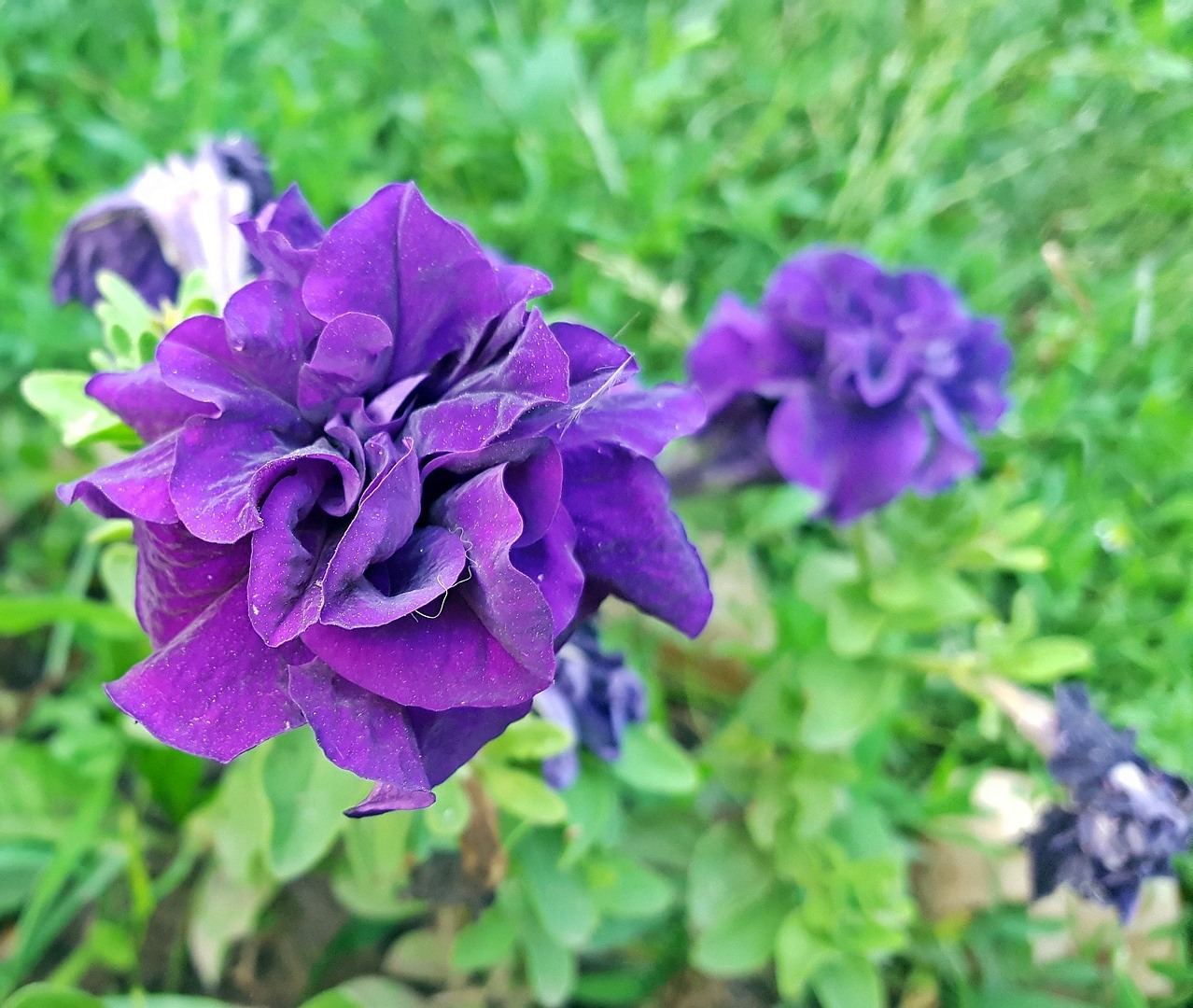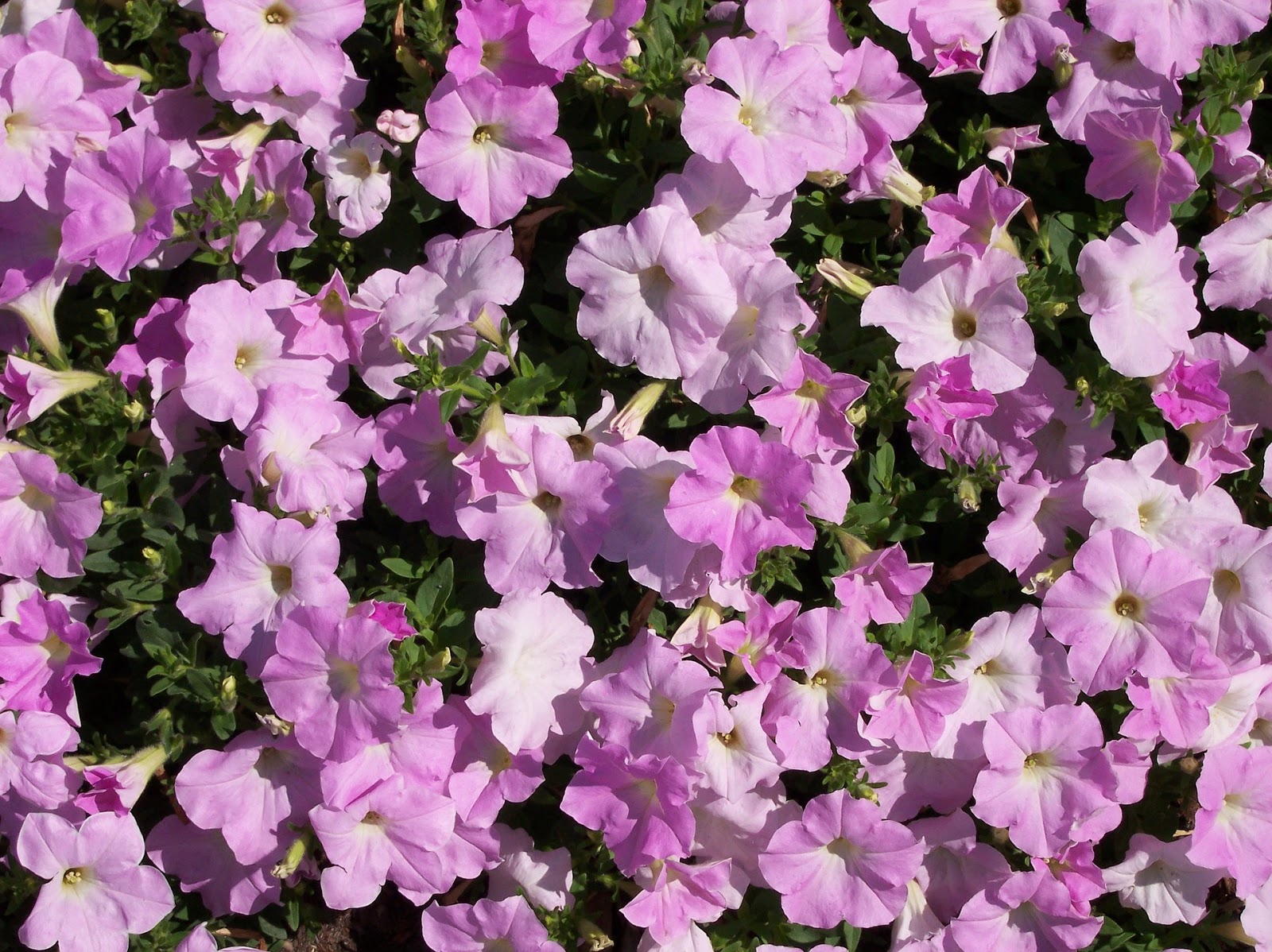Quick facts
Petunias are among the most popular flowering annuals for good reason.
Petunias are bright and lively, bloom from spring until frost, and scent the air with lovely fragrance.
Best of all, petunias are amazingly easy to grow, both in the garden and in containers.
There are literally hundreds of named petunia varieties. They fall into distinct categories, based on flower size and growth habit.
- Grandiflora have the largest flowers
- Multiflora have greater numbers of somewhat smaller flowers
- Milliflora are miniature with even smaller flowers and plant size
- “Spreading” types (such as “wave” petunias) are fast growers that can fill in large spaces.
Some petunias are more suited to container growing, while others are better for massing in the garden. Whether you like the old-fashioned types or the fancier, new varieties, there truly is something for everyone when it comes to petunias.
The most important requirement for growing petunias successfully is a location with plenty of light. Many varieties will thrive even if the soil is not rich and have undemanding requirements for watering.
Site and soil
-
Petunias need at least 5 or 6 hours of good sunlight; they'll perform even better when located in full sun all day.
-
The more shade they receive, the fewer flowers they'll produce.
-
Impatiens are a better choice for blooming in shady places.
-
-
While soil needn't be terribly rich to grow good petunias, it must drain decently.
-
It's always useful to improve garden soil by conditioning it with organic matter, such as peat moss, compost or manure.
-
Spread the organic matter 2 to 3 inches thick.
-
Incorporate it into the soil to a depth of 8 to 10 inches, using a rototiller or garden fork.
-
Helps open up heavy clay soil, which improves drainage, but can also increase the ability of light, sandy soil to hold moisture and nutrients.
-
How to care for petunias
-
When planting in the garden, work a balanced fertilizer such as 8-8-8, 10-10-10, or 12-12-12 into soil at a rate of 2 pounds per 100 square feet.
-
Later – early to mid-July – begin to use liquid fertilizer every 3 weeks
-
"Spreading" types require weekly fertilizing.
-
-
When planting window boxes or other containers, incorporate timed-release fertilizer into the soil.
-
Later – early to mid-July – begin to fertilize regularly every 2 weeks with a liquid fertilizer meant specially for flowering plants.
-
"Spreading" types require weekly fertilizing.
-
-
For a fertilizer recommendation tailor made to your specific garden conditions, have an accurate soil test run. Contact your local County Extension office or the Soil Testing Lab [http://soiltest.cfans.umn.edu/] at the University of Minnesota for information.
Petunias tolerate lots of heat, and are relatively undemanding when it comes to water. Except for "spreading" types, which require frequent watering, thorough watering once a week should be sufficient in all but the worst weather.
-
Leave sprinklers on long enough to soak the soil to a depth of 6 to 8 inches every time you water.
-
Hanging baskets and other containers also need more frequent watering, perhaps as often as daily, depending on their size and the volume of soil they contain.
Whenever feasible, it's a good idea to remove faded flowers, including the portion below each flower where seeds will develop. This practice, called "deadheading," encourages blooming by preventing seed formation. Although it may not be practical to deadhead masses of petunias in the garden, it's a must for flowering annuals in containers. Deadheading not only helps prolong blooming, it also keeps plants looking fresh, healthy and well-groomed.
A final tip: If you have an abundance of petunias blooming in the garden, it won't hurt to cut a length of stem here and there to take indoors for use in bouquets and floral arrangements. Just be sure to remove any leaves that will be submerged in the vase, where they would deteriorate rapidly.
Planting
Wait until soil warms to about 60F degrees and frost danger has passed before transplanting petunias into the garden.
-
Space grandifloras and multifloras about 12 inches apart in full sunlight, or several inches closer together when planted in a shadier location.
-
Milliflora petunias can be spaced as close as 4 to 6 inches.
-
The spreading ground-cover types of petunias should be planted at least 1 1/2 feet apart.
-
Petunias must be planted much more closely together in containers to look attractively full right from the start.
Plan to provide some protection from midday sun for the first few days, if weather is hot or windy with few clouds at transplanting time. When grandifloras or multifloras grow about six inches tall, pinch them back to encourage rapid formation of flowering side shoots. Do not pinch millifloras or "spreading" petunias.
Starting seeds indoors
Although petunias are easy to grow outdoors from transplants, they may prove more challenging for beginning gardeners to start from seed. The advantages of starting petunias indoors are that you have a wider choice of varieties from which to choose, and you can raise large quantities of plants for less money. But it takes 10 to 12 weeks before petunias are big enough to plant out, so they need to be started early (about March first in northern climates). This means there's ample opportunity for problems to develop between seeding and the final product!
Because of their size, petunia seeds present a challenge, even to experienced gardeners. Not only are they very tiny and fine, but they also need light in order to germinate. Pelleted seeds are easier to handle, but not always available.
- Spread seeds sparingly on top of a container of clean, damp potting soil or milled sphagnum moss.
- Water with a fine mist to wash them into the potting material or press them in gently with your fingers before watering.
- Cover the container with clear plastic and store it in a bright, warm (70 to 85 degrees F) place--out of direct sunlight--until seeds begin to sprout. This usually takes 7 to 10 days after planting.
- Remove the plastic film once seedlings emerge.
- Relocate the container to a bright, but cooler place; 65 degree F days, with night temperatures anywhere from 55 to 65 degrees F.
- Place the petunias 4 to 6 inches below a fluorescent light fixture until they're ready to plant outdoors.
- You needn't invest in expensive lights made specially for growing plants. Ordinary fluorescent tubes usually do just fine.
- Put the lights on a timer to keep them lit 16 to 18 hours daily.
- Raise the lights as seedlings grow, always maintaining that 4 to 6 inch space between plants and lights.
- When seedlings have 3 true leaves, it's time to transplant them into individual peat pots or packs that hold several plants each.
- Feed them every 2 weeks (weekly for the "spreaders") with diluted liquid fertilizer.
- Harden off young plants by putting them outside on sunny, warm days. Then bring them back in at night for several days before planting them outdoors permanently.
How to choose petunias
Grandiflora petunias, the most popular type, produce large flowers that are three to four or more inches across. They may be singles or ruffled doubles. Some have a pendulous, cascading habit that makes them more suitable for hanging baskets and window boxes, but most are upright plants that develop over the summer into large mounds of flowers which are 12 to 15 inches tall.
Multiflora petunias are often more compact. Their flowers are smaller than the grandifloras, but they make up for it with the sheer number of blossoms that are open at any given time. Like grandiflora varieties, they're available in single or double forms, though the vast majority are singles. Typically, they're massed together to create big splashes of color in the garden.
Milliflora petunias are compact, miniature plants that produce abundant quantities of perfect, small flowers only an inch to an inch and a half in diameter. They make good edging plants and are also attractive when mixed with other flowering annuals in containers, where they may be viewed close-up.
Groundcover or "spreading" petunias are only about six inches tall, but spread so rapidly that they cover a huge area over one growing season, provided they're watered and fertilized frequently. This makes them ideal for scrambling down a hillside garden, or planting atop a retaining wall. They're also amazing in hanging baskets and window boxes, where they trail two to three feet or more over the summer. When grown in full sunlight, they are so covered by flowers that you hardly see any foliage. “Wave” petunias are a common type of spreading petunia.
Reviewed in 2018


